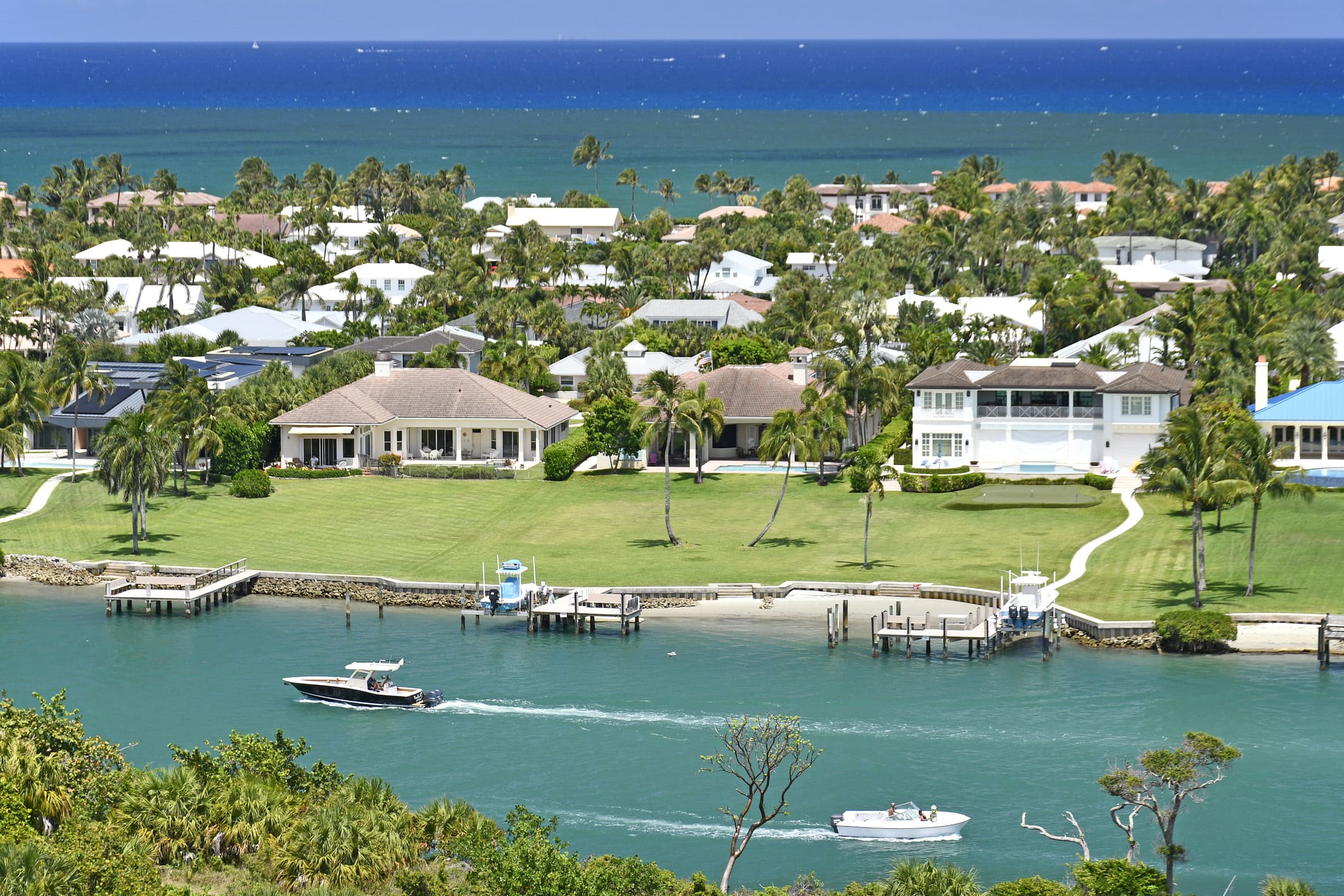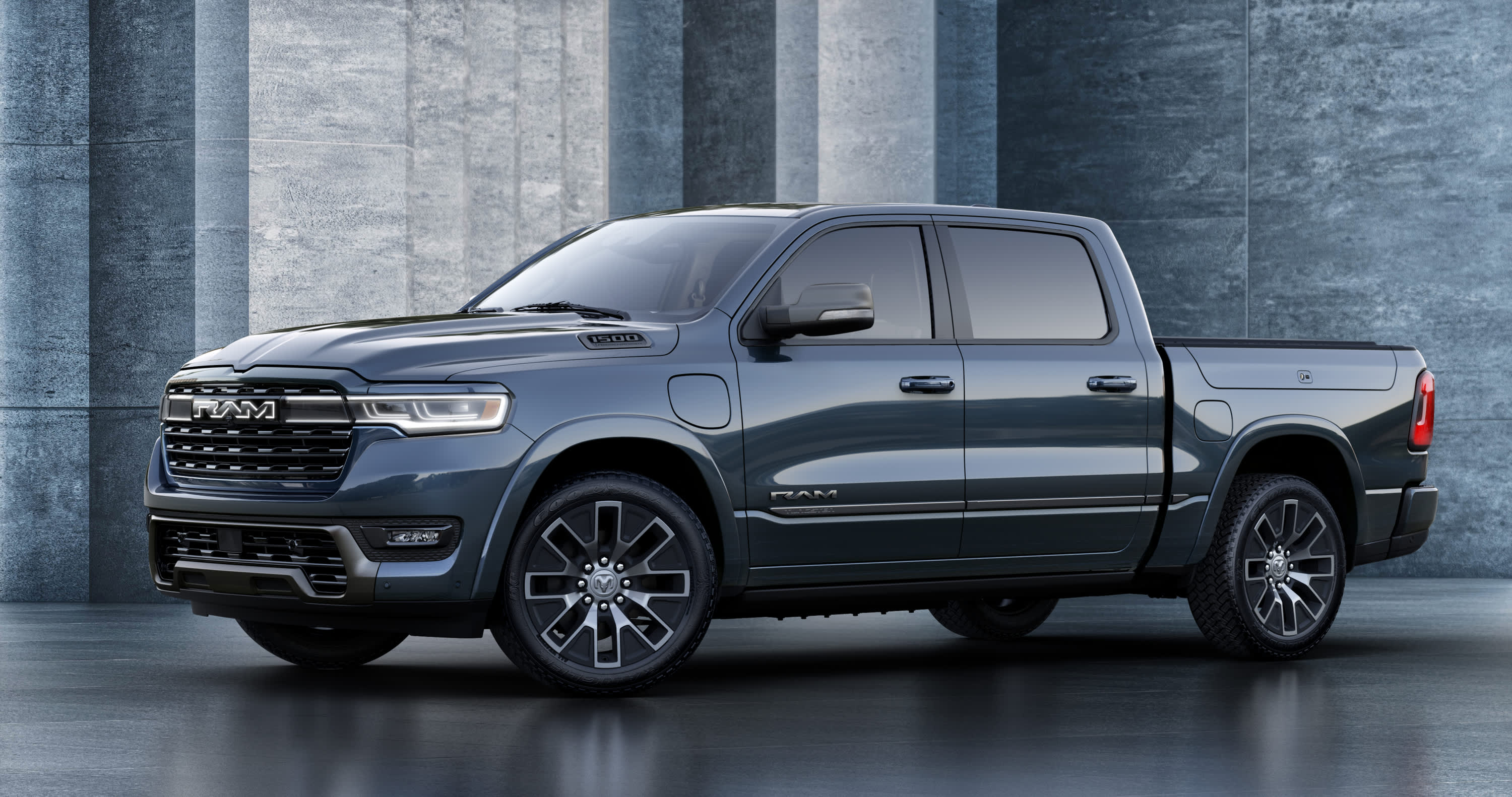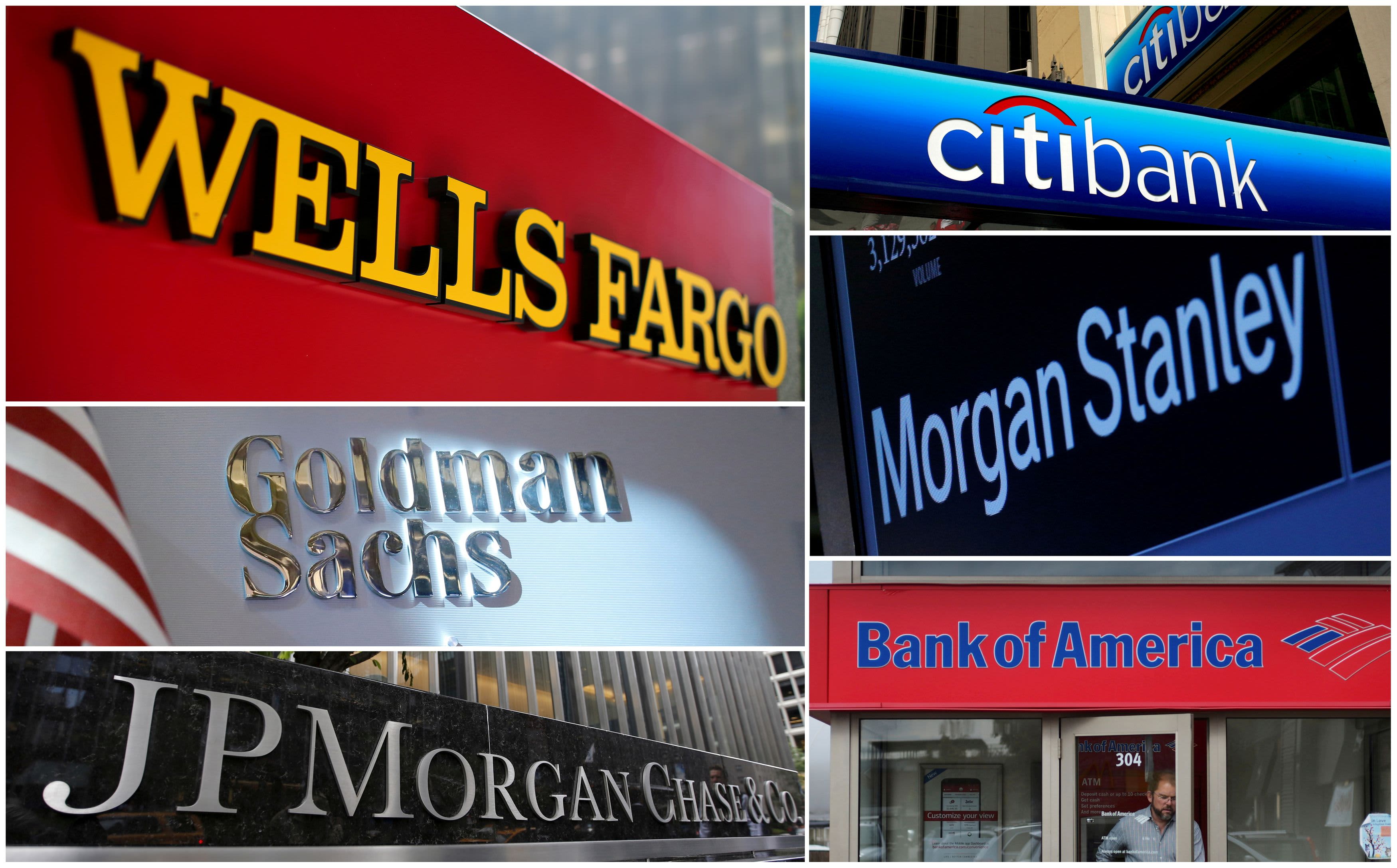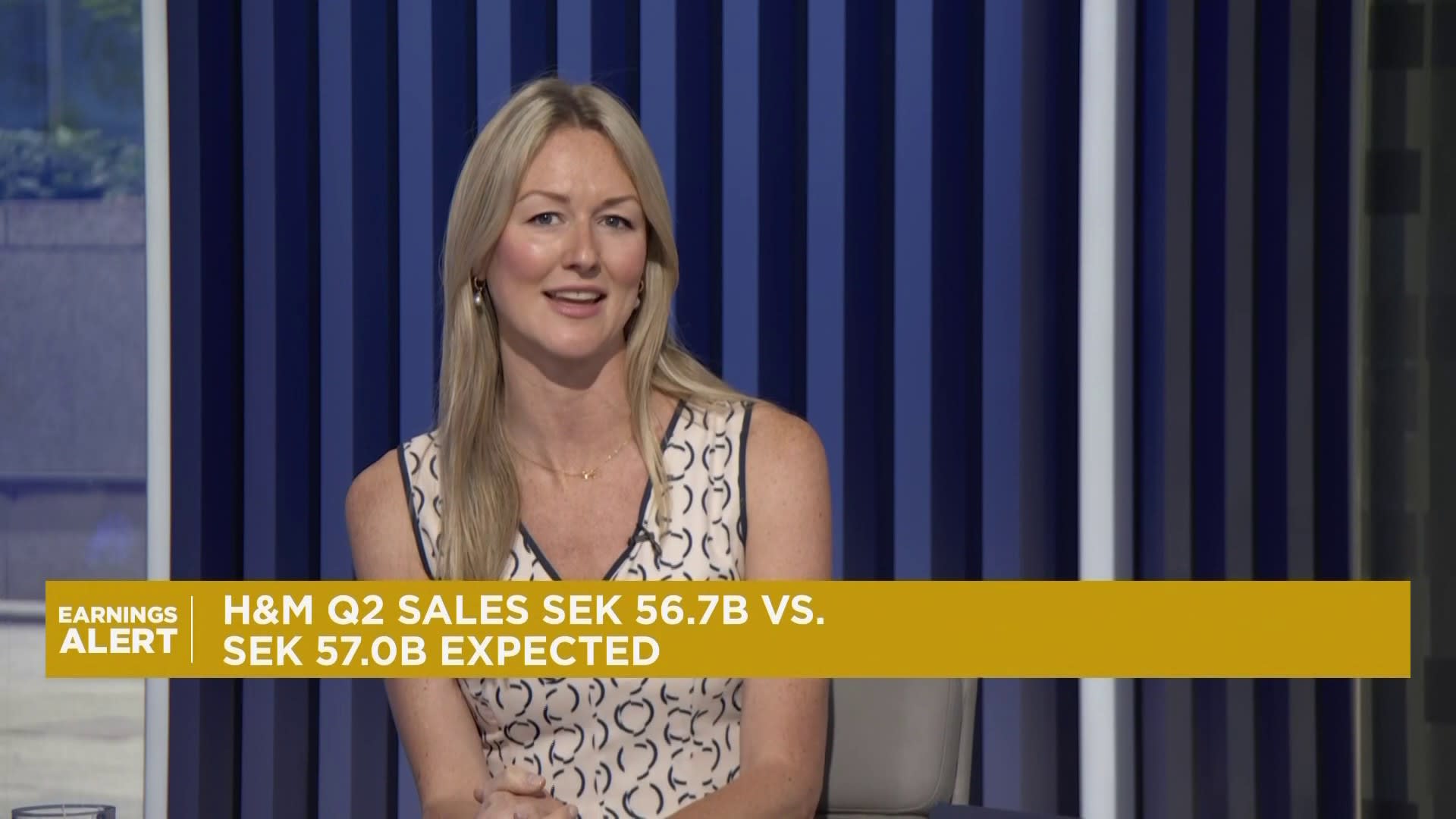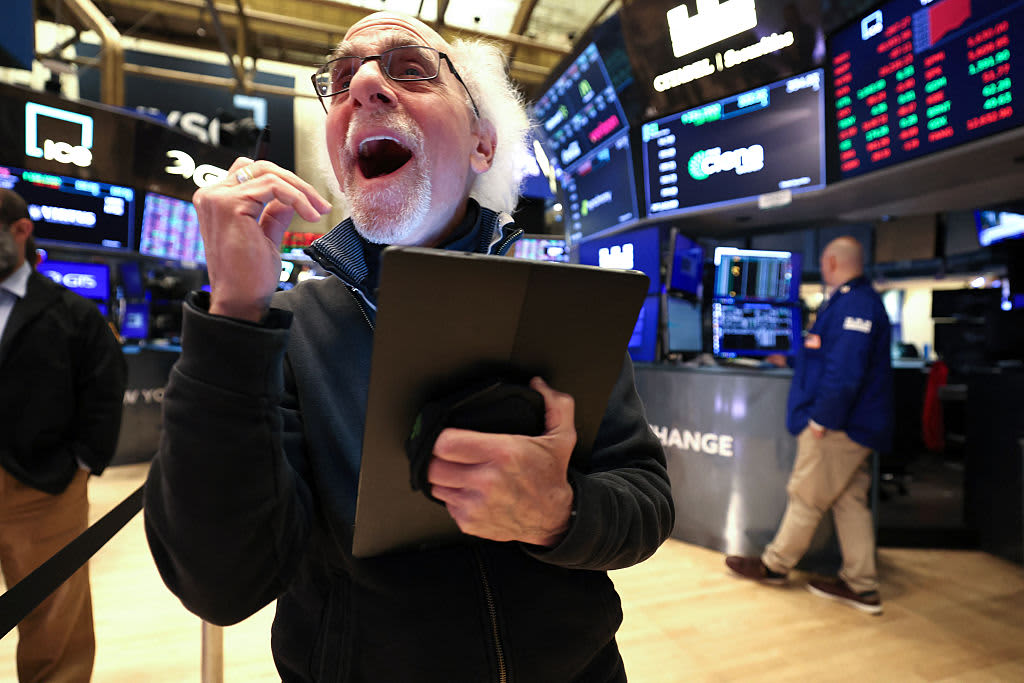Mimi Lam, co-founder and chief executive officer of Superette, arranges cannabis-infused beverages at the Superette Sip ‘N’ Smoke cannabis dispensary in Toronto, Ontario, Canada, on Monday, Oct. 25, 2021.
Della Robbins | Bloomberg | Getty Images
More Americans are looking for alcohol alternatives, and beverage makers that tout the health benefits of their drinks are trying to capitalize on that.
More than 40% of Americans say they are trying to drink less alcohol in 2024, a jump from 34% a year prior, according to recent figures from data insights company NCSolutions. The number goes up to 61% for Generation Z, compared with the 40% of that age group who said they planned to drink less in 2023.
As younger consumers grow more health conscious and generations that typically drink more get older, interest in nonalcoholic drinks has climbed, according to Sherry Frey, a wellness expert at Nielsen IQ. That has helped fuel the rise of so-called functional beverages.
Functional beverages are drinks that aim to go beyond hydration or the nostalgic taste for alcohol that nonalcoholic beer and mocktails often target. Many include adaptogens, herbs that are marketed as having specific health and cognitive benefits, while others include substances such as THC, the psychoactive ingredient in cannabis, for their mood-altering properties.
The drinks surged in popularity after the pandemic, crowding grocery store aisles and then appearing on restaurant and bar menus.
The phenomenon is worldwide. The global functional beverages market is expected to reach $249.5 billion by 2026, according to 2022 research by Euromonitor.
Functional beverages retail sales in the U.S. topped $9 billion in the 52 weeks ending March 30, according to the latest data from NielsenIQ, almost 10% of total beverages. The numbers exclude cannabis drinks.
“People want to have an experience, and once brands are able to create sustainable, consistent, effective, comparable experiences, I think the majority of the market share is going to move away from [alcohol] alternatives to functional [alcohol] alternatives,” Aaron Nosbisch, founder of cannabis and adaptogenic drinks company Brez, told CNBC.
But the growth of functional beverages doesn’t signal the end of alcohol consumption. Around 80% of those who buy nonalcoholic beverages also buy drinks that contain alcohol, according to consulting firm BCG, based on research from NielsenIQ.
“Yes, there’s some cannibalization of existing beer, wine and spirits products” but not a total replacement of them, Nic Zhou, BCG managing director and partner, told CNBC.
“People are drinking [functional beverages] because they want more choices,” Zhou said. “They want to be able to socialize and look cool, feel part of the group, but not necessarily have to consume alcohol.”
Younger consumers drive the trend
Younger consumers are fueling functional drinks. Alcoholic beverage penetration among Gen Z consumers over 21 was the lowest among all generations, according to the latest data from Numerator.
But Zhou said it’s too early to tell whether the trend will last, or if it’s a product of coming of age during the pandemic, when there were fewer opportunities to socialize in a group setting with alcohol.
Frey added that interest from older generations shouldn’t be discounted.
“We all focus on the younger generation always,” Frey said. ” But when you think about how much [baby boomers] are worth in terms of their spend and the fact that they are reducing alcohol and looking for other alternatives, I think it’s a really important element as well.”
Jake Bullock, founder and CEO of cannabis drink company Cann, said consumers now have more health and wellness information available than ever on devices such as Apple Watches or iPhones. He said he believes the data is “encouraging people to consider the harms of alcohol in a way that we never would have 20 years ago.”
Consumers are looking for health benefits
Consumer health and wellness concerns spiked during the pandemic, and the trend has not gone away, Frey said. She added Nielsen IQ’s research, done every six months, finds health and wellness is a top priority for consumers. But the concerns have evolved from wanting to cure specific ailments to aiming to increase general well-being in order to live longer and better, according to Nielsen data.
Frey said the shift has piqued interest in functional beverages. Drinks that promote higher energy levels, better digestive and brain health and mood-enhancing benefits are among the most popular.
Three-quarters of respondents to a 2023 survey by Datassential said they believed functional foods and beverages would help them live longer and be healthier without having to radically change their diet.
“Consumers are looking for products that do more than one thing for them. So if you can achieve a great taste, but also some functional benefit, you’re adding more value,” Jordan Bass, CEO and founder of adaptogenic beer alternative brand Hop Wtr, told CNBC.
Hop Wtr was co-founded by Nick Taranto, an ex-Marine turned competitive athlete, and Bass, who said he was training for a triathlon at the time. The duo loved “to crack open a cold beer” but wanted a nonalcoholic alternative that would relax them without the health drawbacks of alcohol, Bass said.
Hop Wtr was initially marketed as a beer alternative due to its hoppy flavor. But Bass said the company’s marketing shifted after it saw data showing wide consumer interest in functional beverages.
The drink includes several adaptogens and nootropics. Adaptogens are herbs such as ashwagandha that advocates claim help the body’s response to stress, anxiety and fatigue. Nootropics are popular substances such as L-theanine and caffeine that are claimed to improve mood and provide focus and energy.
“Adaptogens and functionals are marketing terms that were invented that mean drugs for sober people,” joked bartender Elliott Edge.
Edge is a bartender and manager at Hekate, a witchcraft-themed sober bar in the East Village neighborhood of New York City. Hekate was the first sober bar in the city when it opened in January 2022.
Owner Abby Ehmann initially thought she would have to make everything from scratch, but said she was pleasantly surprised to find that over time, new alcohol-alternative products started popping up “like every week.”
The bar stays busy — especially during Sober October and Dry January, when, Edge says, “If you smile in here, your cheeks will touch someone else’s.” Customers range from 80-year-old locals to New York University undergraduates, and not all of them are sober, Edge added.
Alcohol is the original functional drink. People use it to change their mood or act as a social lubricant, and centuries ago they drank it for supposed health benefits, from aiding digestion to warding off the plague. But as more consumers worry about negative health effects of alcohol, Edge has found that people are open to trying many alternatives.
“People are curious. It seems like they are tired of relying exclusively on something like alcohol for the moods and feelings they want, which are calmness but also sociability,” Edge said.
Functional drinks serve as not only a potentially healthier substitute for alcohol but also for sodas, as consumers grow more wary of sugar.
But like the health benefit claims made about vitamins and supplements, a lot of the claims by beverage makers are not subject to FDA review.
“It’s certainly not a straightforward space where you can take everything at face value,” Zhou said.
This uncertainty is already leading to legal trouble. Poppi, a functional soda touting digestive benefits, is now facing a lawsuit challenging its claims of prebiotic benefits.
In a statement to CNBC, a Poppi spokesperson said the company stands behind the product.
“We believe the lawsuit is baseless and we will vigorously defend against these allegations,” Poppi told CNBC.
The rise of cannabis drinks
A problem with most nonalcoholic beer and spirits is that you get the taste but “none of the fun,” Brez founder Nosbisch said. People who want to be healthier and eliminate hangovers don’t necessarily want to give up the “social buzz” of alcohol.
“So I think a lot of our success is coming from people actually looking for a true alcohol alternative: something that doesn’t just taste like alcohol but actually gives them a kick,” Nosbisch said.
Cann’s Bullock agreed, saying that the company’s biggest customer group is “the healthy hedonists.”
“These are the people that are closing down the dance floor but then also at their morning workout class,” Bullock told CNBC.
Gen Z is also leading the trend in THC-infused beverage adoption, according to another survey from Numerator.
Cannabis drinks provide a way to consume THC and CBD in microdoses, similar to how consumers regularly drink alcohol or coffee. That allows the drinker to pace themselves, with effects that kick in and wear off more quickly than with edibles.
This makes the experience more appealing to non-cannabis users, companies say. Eighty percent of Brez customers are non-cannabis users who are looking for a true alcohol alternative, Nosbisch said, adding that he thinks the real business opportunity is in gaining market share from alcohol.
“We sit at the intersection of sober curiosity and cannabis curiosity,” Bullock said.
Cann launched in 2019 in cannabis dispensaries. But as legalization spreads, it now sells to more than 3,000 points of distribution including liquor stores and convenience stores, on top of the 60% of its sales that comes direct to the consumer via its website. The company has seen 60% growth year over year and has sold more than 9 million cans since its launch, a number it expects to match this year alone.
Zhou said the buy-in from big beverage manufacturers will determine whether consumer behavior will shift for good. And that will depend on the extent of cannabis legalization.
Cannabis market revenue is forecast to reach $42.98 billion in 2024. Growth potential is increasing as President Joe Biden’s administration moves to ease federal restrictions on marijuana and reclassify it to be placed alongside drugs such as Tylenol with codeine, and testosterone.
Marijuana is still illegal at the federal level, so the cannabis drinks use THC derived from hemp. While there are limits on the amount of THC in hemp pre-harvest, there aren’t any for the products made from the plant.
That’s only one of the safety questions the functional beverage industry will have to figure out as it grows.
“If we’re going to introduce all these functional alternatives, then how do we ensure safety in that process, and that’s what’s going to unfold in this next chapter,” Nosbisch said.




